How Grand Rapids, Minnesota Thrives Through Creative People Power
This article is part of a series highlighting artists and leaders featured at the Rural Arts and Culture Summit, a biennial, practitioner-driven gathering hosted by Springboard for the Arts that celebrates and expands the field of rural arts-based community development. The 2019 Summit will take place October 3 – 5, 2019 at the Reif Center for Performing Arts in Grand Rapids, Minnesota. Learn more and register at www.ruralartsandculturesummit.
This October, the Rural Arts and Culture Summit moves to Grand Rapids, Minnesota, a community of about 12,000 people which is the gateway to the Northwoods of Minnesota, home to rural community development anchors like the Blandin Foundation, and where artists are everywhere—whether they’re sharing stories and playing music through the airways of KAXE, the community-owned radio station, exhibiting artwork or taking a class at MacRostie Art Center, performing on the Reif Center’s stage, selling work during the monthly First Friday Art Walk, or creating public art with the Grand Rapids Arts and Culture Commission.
While participants of the Rural Arts and Culture Summit will travel from all over the country to unpack an array of national topics related to the arts in small communities, they will also be reminded of what this work looks like at the ground level by experiencing Grand Rapids’ local efforts first-hand, learning directly alongside its leaders about creative approaches to opportunities and challenges that are common to many rural communities. Katie Marshall, the executive director of the MacRostie Art Center, is one of those leaders.
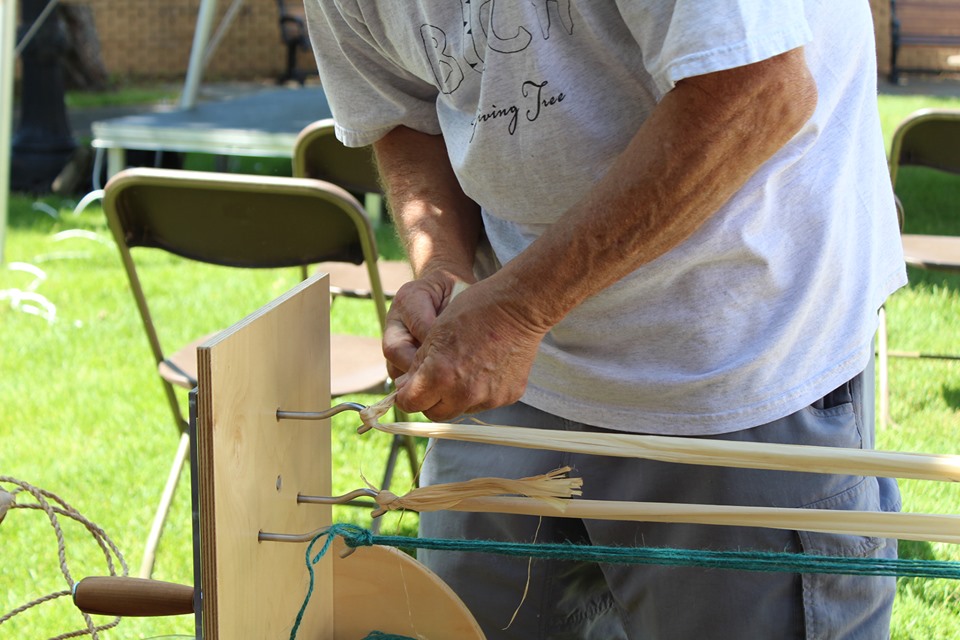
A Thriving Anchor Institution
The MacRostie Art Center (“the MAC”) in downtown Grand Rapids has been a nonprofit arts organization for over 50 years. In addition to hosting monthly rotating exhibitions, the community arts center also offers a variety of community-based art classes for youth and adults taught by local artists, including jewelry making, birch bark weaving, watercolors, painting, drawing, 3D rendering, and pottery. Marshall says they have been particularly focused on offering youth classes in recent years, since art classes aren’t offered in local schools until the eighth grade.
Because of its prime location downtown and long-established roots in the community, the MAC functions as a hub for the arts in Grand Rapids. The center is also home to artist studios as well as a retail art shop where more than 90 local and regional artists with some kind of connection to the area sell their work on consignment. The inventory is ever-changing, but shoppers can find an assortment of hand-made jewelry, pottery, wood carvings, metalwork, clothing, and more inside.
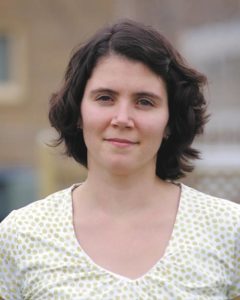
Marshall has run the MAC since 2011 and is widely lauded by other folks in the Grand Rapids arts community for the central role she has played in making it a thriving arts destination. For her efforts, she was named the recipient of the Arrowhead Regional Arts Council’s Maddie Simons Arts Advocate Award in 2019, in which she was recognized for “[nurturing] major shows that have started at the MAC on suicide, mental health, female power in a male-dominated world, homelessness, and the environment,” in addition to serving as chair of the Board of Directors of the Itasca Orchestra & Strings Program, working with the Grand Rapids school district to bring arts into the classroom, and working with a program to bring arts to those in juvenile detention.
It probably goes without saying, but bringing arts to rural communities is work that Marshall is particularly passionate about.
“Having access to high-quality arts experiences close to home is something rural people deserve just as much as those living in the city,” she says. “Also, in terms of community development and community growth, arts are a huge part of that. That’s something we’ve seen here, especially in recent years: Grand Rapids has been embracing that identity as an arts community more and more.”
She explains that, while there are several local cultural organizations much like the MAC that have been around for 40 or 50 years, the Grand Rapids arts scene really started gaining momentum over the last decade. One of the major catalysts of that momentum is the First Friday Art Walk that started eight years ago.
The First Friday Art Walk is organized by Grand Rapids Arts, a collaborative of Grand Rapids-based arts organizations that work together to organize and promote cultural events. These organizations started working together in an ad hoc way about 10 years ago, but in the last few years Grand Rapids Arts has been established as its own nonprofit.
“The purpose [of Grand Rapids Arts] is to market the arts and individual artists, connect people with the arts, and work together in doing that instead of competing for audiences,” says Marshall. The collective has member organizations large and small, including local theatre and choral groups. “Just knowing what’s going on with them, we can work together and cross-promote all of our events, just like we do with First Friday.”
First Friday is held every month year-round and is open to any organization or business that wants to be involved; the only requirement is that they have to have some kind of arts-related activity for at least one hour between 4 p.m. and 7 p.m.
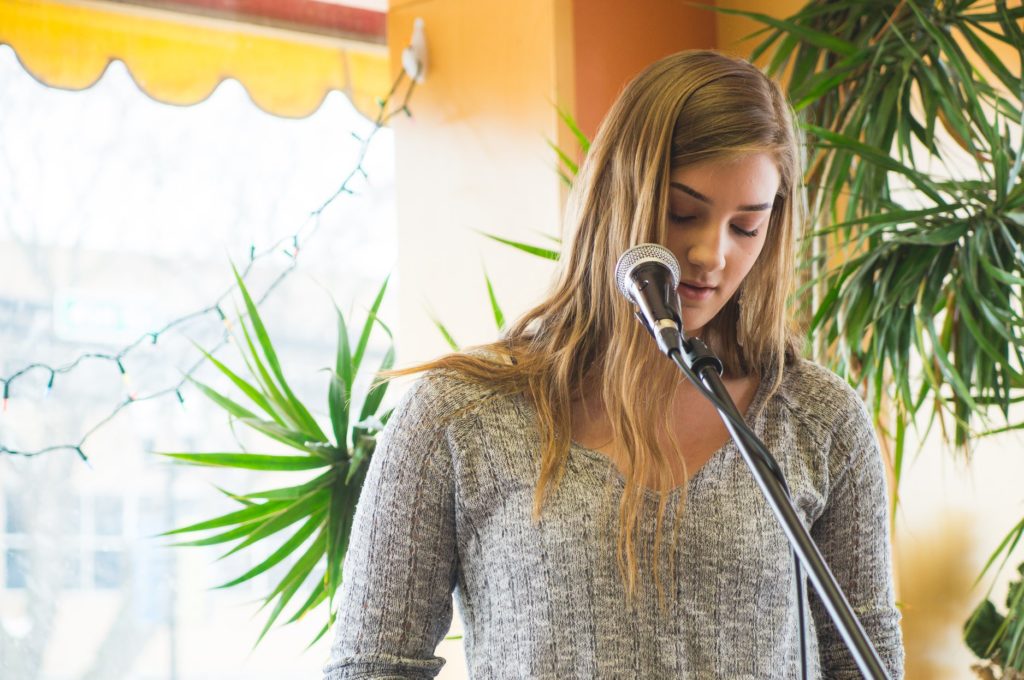
The MAC always schedules their new exhibit openings on First Fridays and makes a big party out of them with plenty of great food and free wine. They consistently participate every month—others rotate in and out seasonally or as they have events come up—so they are also the de facto hub for First Friday, and they print maps each month of the other participating locations. On average, Marshall says, about 200 people come through every First Friday, locals and tourists alike.
“We’re not small, but we’re 80 miles from Duluth, which is the next closest major city, and 180 miles from the Twin Cities metro area,” Marshall explains. “We also serve a lot of surrounding areas—there are a lot of lakes and people live out of town. A lot of people in the country are not necessarily living in a town or city, so we serve that population as well, including true small towns with populations of 800.”
The MAC has recently started offering professional development services for artists, including consultations on creating portfolios and grant writing.
“I want to be of service to rural artists and provide opportunities for professional development,” says Marshall. “There are funding resources out there, and I have made it my personal mission to make sure rural artists have access to them.”
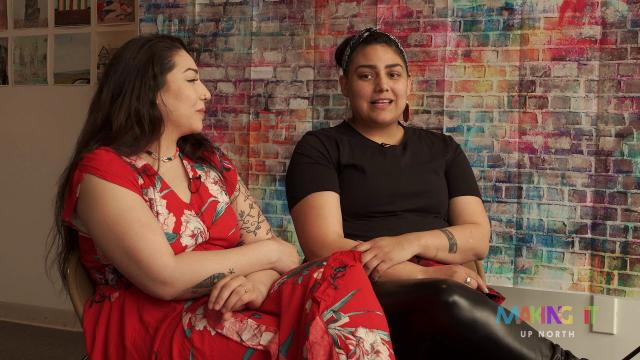
Indigenous fashion designer Amber Buckanaga, co-owner of the Buckanaga Social Club, attended the First Peoples Fund business training at the MAC in the spring of 2018. Exactly one year later, the fledgling designer—who has been selling her apparel and accessories for a little over a year now—had her own fashion showcase at the MAC after showing it at the RISE New York Fashion Week in early 2019. She also sells her work at the MAC’s art shop in addition to her Etsy store.
“Everyone at MacRostie has been such a big help,” says Buckanaga. “It was pretty cool to be back there a year later and reflect back on all the accomplishments [we’ve had] in that time.”
Marshall says that the MAC is actively making an effort to include Indigenous artists and the stories of Indigenous peoples and their culture in the center’s exhibits and programming.
“We are amidst a number of different Native nations,” she says. “We’re surrounded by a lot of Anishinaabe history and culture, and we want to acknowledge that we’re on Native land as much as possible.”
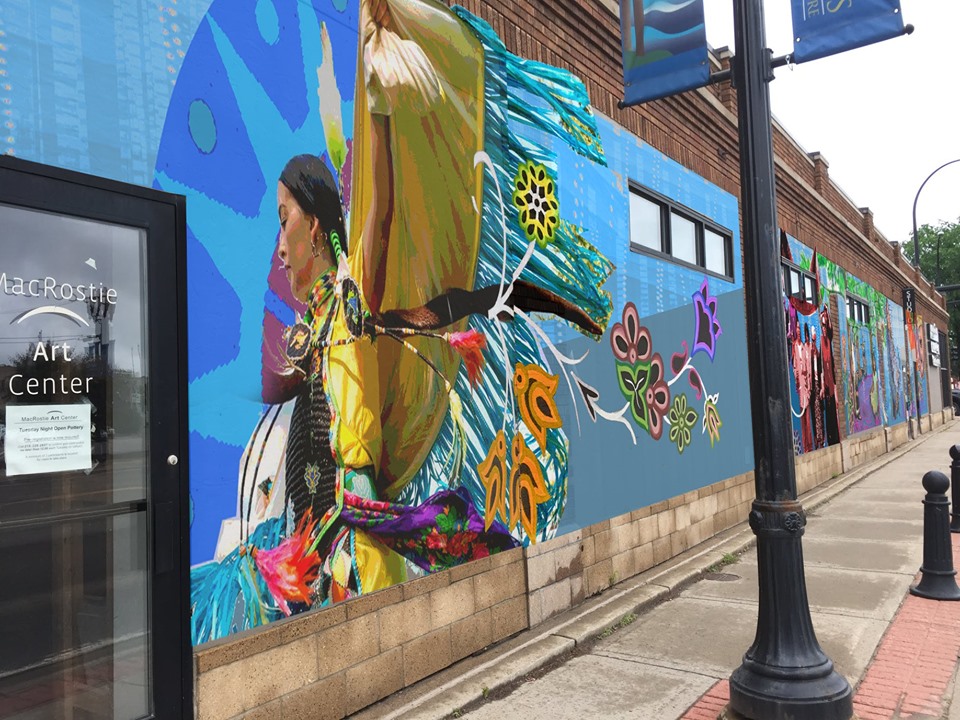
Establishing an Arts Commission
Another major development of the last decade was the establishment of the Grand Rapids Arts and Culture Commission (GRACC).
“That was a big step in recognizing that the arts are a huge contribution to the city,” Marshall says. “It’s one of the things that’s a draw to recruit people to this area. It’s a reason people come here. It’s a big draw for economic and community development and also a big draw for the community.”
The Grand Rapids Arts and Culture Commission formed in 2013 after the city council recognized that the city should play an active role in promoting arts and culture in Grand Rapids.
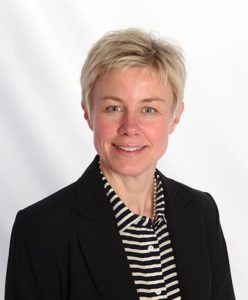
“It is relatively unusual for a community of our size to have a designated [arts and culture] commission, but there’s a lot of local pride in that,” says Sonja Merrild, current chairman of the GRACC and director of grants of the Blandin Foundation.
The first thing the GRACC did was work with a team of arts and economic development consultants, with help from the U.S. Economic Development Administration, to create an “arts and culture roadmap” for the city.
“We got really top-notch, nationally recognized consultants to come in and work with our fledgling commission to start this long process of community engagement that really mapped all of our assets and opportunities, who we were as a community and who we wanted to be, and how we can express that,” says Merrild. “They developed these really tangible goals that got us started.”
One of the initial suggestions involved changing some government structures to better support arts and culture development, such as the rules and regulations around food truck operation, liquor licenses, and signage that make it easier for downtown businesses to participate in arts events to make them as engaging and accessible as possible. Now it’s easier for institutions like the MAC to serve alcohol during special events (like First Friday) and for food trucks to be out on the streets (again, for First Friday), and this was something they were able to implement right away.
Another early win was getting 1.5 percent of publicly-bid projects set aside for arts development. From there, the GRACC worked on a second major document: the art adoption and acquisition plan that commits the city to commission, place, and maintain public art with that funding mechanism.
But then, Merrild said, the GRACC was faced with a new problem: how to commission, place, and maintain public art, something none of them had ever done before. For this, they turned to Forecast Public Art in St. Paul.
“Forecast Public Art is unique to Minnesota, and maybe in the US,” she says. “They teach public entities and nonprofits how to place public art and how to plan for placement, how to commission artists, who can place it, and how to grow the pool of rural artists who can place art in the public realm.”
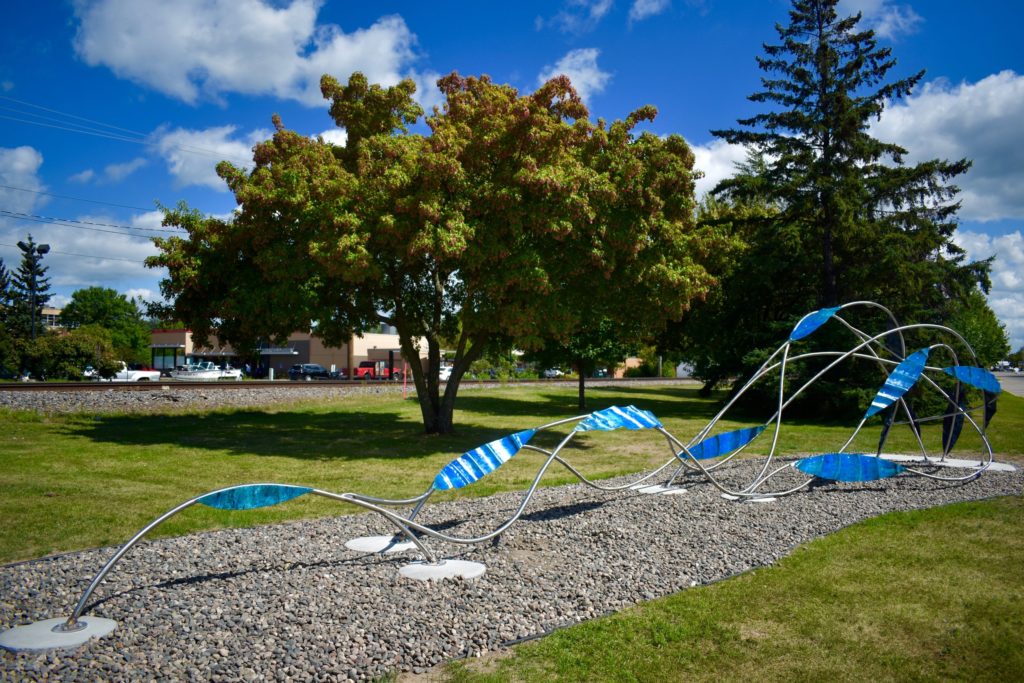
By the end of this fall, Grand Rapids will have placed eight pieces of public art: two murals, four sculptures, and two pieces of sidewalk poetry. “From now on we feel like we have all the structure in place to commission art for the next season and start to beautify our city,” says Merrild. “There are enough people who understand that placing art in the public realm is an economic development strategy.”
The latest study produced by the GRACC was the Mississippi Riverfront venue feasibility study, the result of an expressed community desire to see a performing arts venue and other arts development along the Mississippi River. In 2020, the commission will once again analyze the economic impact of nonprofit arts and culture organizations and their audiences in Grand Rapids as they did in 2015 for fiscal year 2013, finding a total economic impact of over $5 million.
Before Merrild took over, the first chairman of the Grand Rapids Arts and Culture Commission was Kathy Dodge, who is also the co-founder of Grand Rapids Arts and a previous recipient of the Maddie Simons Arts Advocate Award.
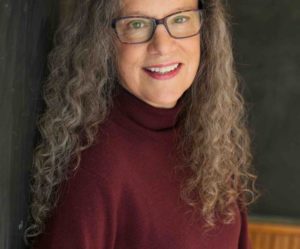
Dodge spent most of her life as a high school English teacher in Grand Rapids and got involved in the arts nonprofit world only after she retired, becoming executive director of the Itasca Orchestra & Strings Program. As a founding commissioner and first chairman of the GRACC, Dodge oversaw the commission from its earliest beginnings, from writing the proposal to the city council and establishing bylaws to sending out the requests for proposals to establish that first arts and culture roadmap and realizing that public art can’t just be placed anywhere.
“One of the goals [when the commission first formed] was to develop a public art program, so we naïvely went around and decided where we wanted to put public art until we realized [we didn’t know what we were] doing,” she laughs.
It was while the commissioners were attending the 2017 Rural Arts & Culture Summit, when they heard Forecast Public Art Founder and Lead Principal Consultant Jack Becker list off the 15 things a city needs to do before placing a piece of public art, that, Dodge says, they realized they really needed some help. They were able to secure some funding for downtown development from the Iron Range Resources and Rehabilitation Board and get some guidance from Becker and his team.
Dodge also spearheaded the effort for the city to host artists-in-residence at the Historic Old Central School, a stately century-old former elementary school in the center of town that has been repurposed as a multi-tenant location for shops, services, and art galleries. There are several studio spaces now available for local artists, and these studios are all open for First Friday tours. This residency has hosted 30 artists so far, with several who have renewed repeatedly and have noticeably been able to advance their artistry and their standing as artists in the community as a result.
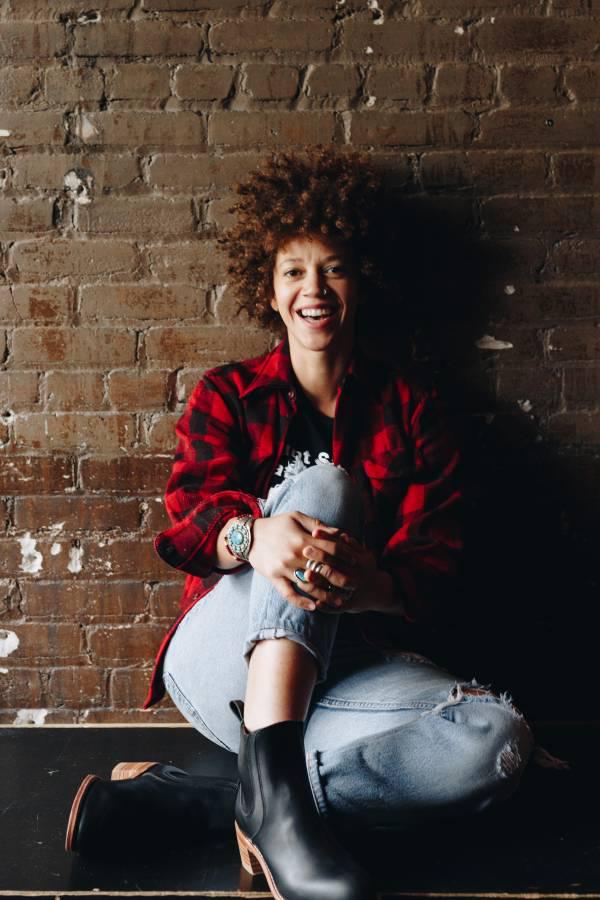
Promoting Minnesota Musicians
Music has been an integral part of the growth of Grand Rapids as an arts and culture destination, and Kari Hedlund has had a lot to do with that. As the music director of Northern Community Radio (KAXE)—an independent, nonprofit radio station that reaches almost all of Northern Minnesota—Hedlund makes sure that Minnesota musicians are played on-air at least once an hour during music programming.
The radio station has been around since 1976 and has an enormous reach—pretty much the entire northern half of the state. While they focus a lot on events in Grand Rapids, where the station is located, they also produce and promote events throughout most of north central and northeastern Minnesota.
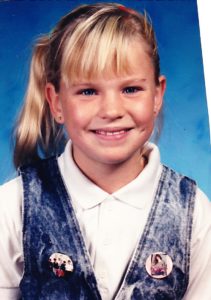
Merrild described the station as being a huge supporter of local arts, and Hedlund agrees. Though Hedlund is somewhat new to Grand Rapids—she moved to town six years ago—she has been fully invested in nurturing, promoting, and growing the Minnesota music scene, especially for the Northern Minnesota audience.
The KAXE Morning Show has a program called “Area Voices,” an interview segment that focuses on the people of Northern Minnesota, often artists, musicians, and other people in creative fields. For every First Friday Art Walk, KAXE does a roundup of what’s happening at all the participating locations and what musicians are playing where. They always cover what’s happening at the local theatres, highlighting the productions and conducting interviews with folks involved, whether it’s children’s theatre, a production by the beloved local community theatre, or a touring Broadway production. And, of course, they cover local concerts, with live music announcements every single day and interviews with musicians playing in Northern Minnesota, cross-promoting their shows in other communities within KAXE’s signal reach.
“We’re just trying to be supportive and help spread the word about these musicians,” Hedlund says. Even the monthly CenterStage concert series produced by KAXE exclusively features Minnesota musicians.
The station has a poetry segment and a storytelling hour featuring local people with entertaining stories about travel and life. Additionally, they bring this community storytelling into the community itself, with a live storytelling hour at one of the local breweries.
“We really do try to cover as much as we can,” she continues. “Our station bucks the whole ‘rural America is dying’ stereotype. We really want to focus on what is good here and what is really happening, and there’s so much going on here it’s kind of bonkers.”
Hedlund also wants people to understand that they need to show up if they want such events to keep happening.
“Even in the six years I’ve been here, there has just been some really fun energy and movement in Grand Rapids,” she says. “It’s been fascinating to see how much has transformed, but it’s also what drives me to help it thrive and really get it across to people that they’ve got to show up in order to keep this scene.”
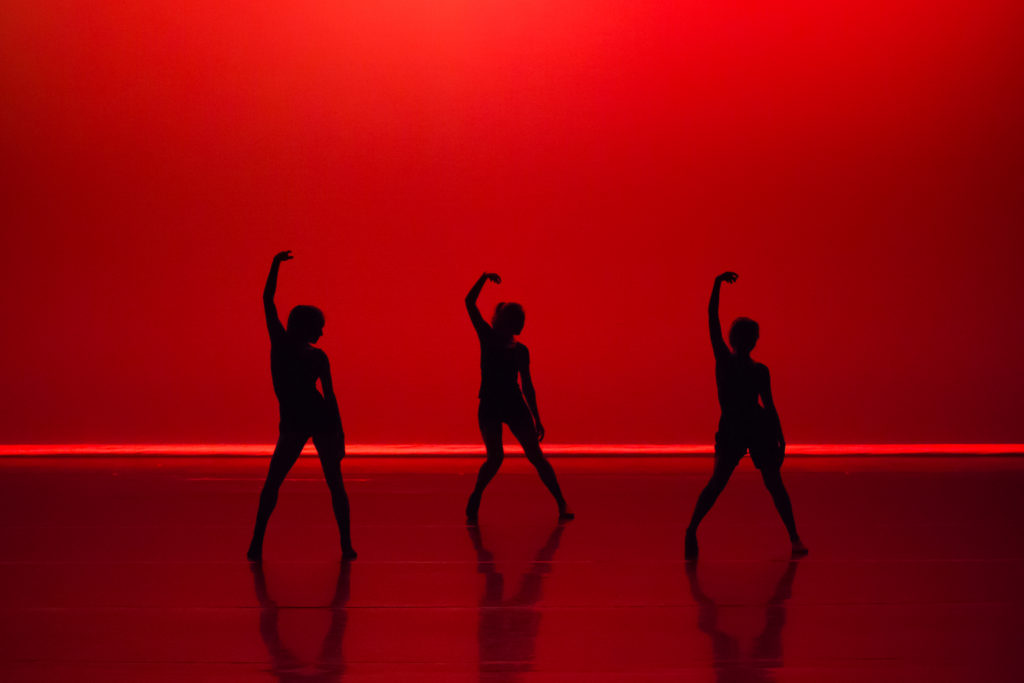
Engaging and Educating the Community
Hedlund isn’t the only relative “newbie” to Grand Rapids: Shantel Dow, the new executive director of the Reif Performing Arts Center, just moved to the city a year ago. She grew up in the Twin Cities but spent the last 15 years living in rural Southern Iowa working as a booking agent. She came to Grand Rapids to take this “dream job” at the Reif.
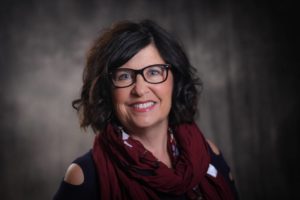
“When I came here I was absolutely shocked that there was a performing arts center of this caliber in a town of this size,” she says. “I was also shocked by how well everybody works together in the arts here. This is not the typical small town where there’s animosity between groups; as soon as someone has a great idea or is doing something great, everyone hops on board.”
The Reif has a 200-seat and a 700-seat theatre, and in these spaces they can program a variety of shows, including soloists, classical trios, string quartets, Broadway shows, touring artists, and other live events. The center is also home to the Grand Rapids Players Community Theatre, the Itasca Orchestra & Strings Program, and Reif Dance, celebrating its 30th anniversary this year.
There is a huge focus on education and community engagement at the center, which includes a variety of classes for different ages offered through Reif Dance. The James Sewell Ballet in Minneapolis is the professional mentor for the dance company, and once a year kids from the Reif Dance program have the opportunity to perform on their stage. Reif also has an impressive theatre education program in partnership with regional school districts: It is one of only three theatre education programs in the state that has been accepted into the prestigious Kennedy Center Partners in Education program. Through this program, they bus in about 25,000 kids each year to see programming geared towards children as well as touring professional productions that also offer educational programming in addition to their performances. The Reif also offers a “Senior Series” of daytime performances with pie and coffee served afterwards, as well as Skype-based early childhood music classes in partnership with the McPhail Center for Music in Minneapolis.
“It’s a lot for a small community, and that’s what attracted me here,” says Dow. “As a booking agent I would do a series of four to five concerts a year, and when I got here I said, ‘You do how many shows every year?'”—55, for those curious—”‘How do you get people in?’ But they come from all over. There’s free parking; the ticket prices are low. People can drive up here from Minneapolis and even save some money.”
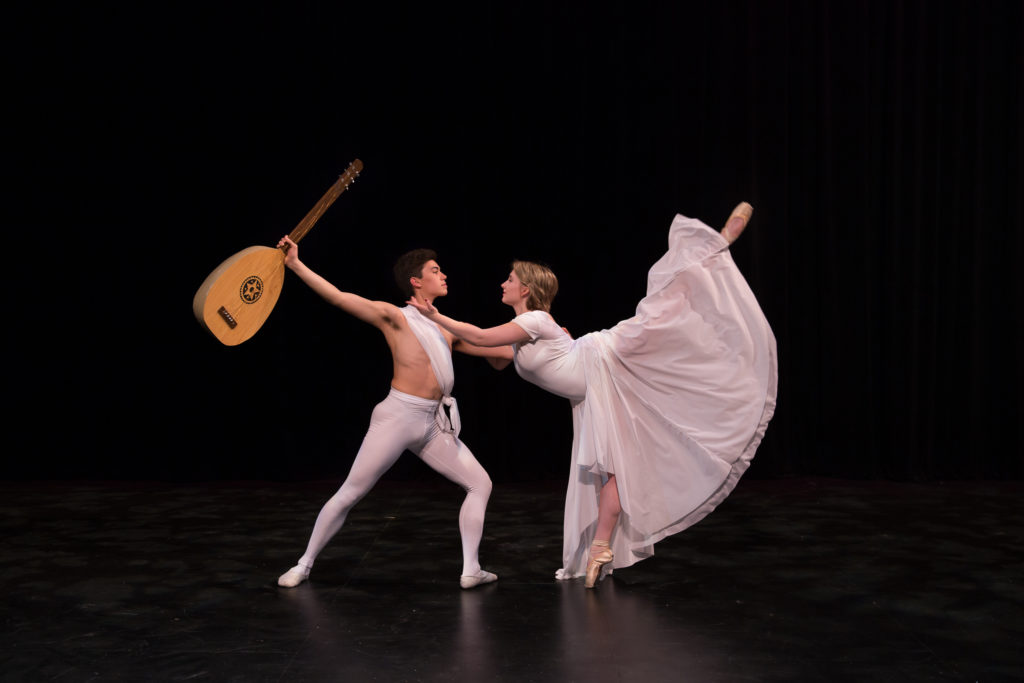
Bringing Them All Together
The Reif recently started renting a building downtown so they can have a presence at First Friday, but for October’s event, the Reif is hosting Springboard for the Arts’ 2019 Rural Arts & Culture Summit, being held in Grand Rapids October 3-5. The Friday and Saturday sessions will be held in theatre and studio spaces at the Reif, as well as at the MAC, the Old Central School, and Grand Rapids’ VFW Post 1720. On October 4, attendees will head downtown to participate in the First Friday Art Walk.
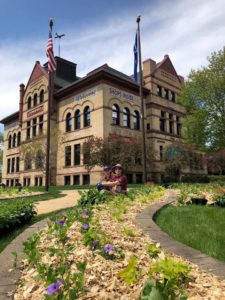
One featured artist of the Summit is Amber Buckanaga, who is organizing a fashion show at Rapids Brewing on Thursday, October 3 at 8 p.m. Buckanaga says that this fashion show will be a completely new collection that is spring-and-summer-inspired, since all the fall fashion weeks happening around the same time (New York, London, Milan, Paris) will be showcasing Spring/Summer 2020 collections. She will continue producing looks that are inspired by traditional Native American dress but modernized with athletic and streetwear flair. During the First Friday Art Walk on October 4, Buckanaga will have a pop-up shop at the Old Central School.
Northern Community Radio will also have an open house during the summit on Thursday, October 3 from 2-5 p.m, and several other local organizations, including the Reif, MAC, and GRACC, will host pre-Summit tours and activities.
Kathy Dodge and Sonja Merrild are among the many speakers at the summit, and will together present a breakout session on arts and culture development led by city government on Saturday, October 5 at 9 a.m.
“It’s really helpful to have a city council with arts appreciators on it,” Merrild says. “The city itself has been extremely collaborative: The city administrator and city engineer have both been very helpful, as has the public works department. Through this unusual collaboration, people tend to bend over backwards to make things happen in ways they might not otherwise have done. There have been some really great collaborations that have happened here, all in support of the arts.”
So: What makes a strong rural community? Creative people power does, and the people of Grand Rapids are working together to make their community strong, resilient, and a fun place to be. Check out creative people power in action at the Rural Arts & Culture Summit, October 3-5: www.racsummit.org
